Paprika is the perfect addition to a variety of dishes, bringing a distinctive fiery red hue and zesty flavor.
But sometimes you might not have paprika available in your kitchen cupboard – or don’t want to use it for dietary reasons.
What are the best substitutes for paprika? The best substitutes for paprika include cayenne pepper, chili powder, smoked paprika, chipotle powder, and Aleppo pepper. You can also use turmeric and annatto powder as alternatives to paprika in some recipes.
Running out of paprika can be stressful when you’re looking forward to enjoying a delicious meal!
But no worries – these easy-to-find spices will do the trick!
Let’s take a look at the 10 best substitutes for paprika and how to use them.
What Is Paprika?
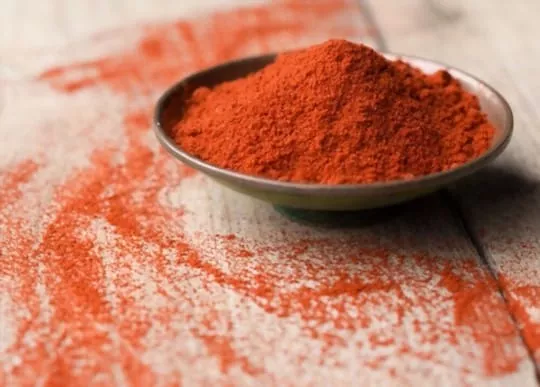
Paprika is a spice made from dried and ground peppers from the Capsicum annuum family.
It is commonly used in a variety of cuisines, including Hungarian, Spanish, and Moroccan.
Paprika can range in flavor from mild and sweet to hot and smoky, depending on the type of pepper used and how it is processed.
The most common types of paprika are sweet, hot, and smoked.
Sweet paprika is made from mild peppers and is often used as a garnish or for coloring dishes.
Hot paprika is made from spicy peppers and adds heat to dishes.
Smoked paprika is made by smoking the peppers before drying and grinding them, giving it a distinct smoky flavor.
Paprika is rich in antioxidants and vitamin C, making it a healthy addition to meals.
| Paprika |
|---|
| Spice made from dried and ground peppers |
| Used in Hungarian, Spanish, and Moroccan cuisines |
| Range in flavor from mild and sweet to hot and smoky |
| Common types include sweet, hot, and smoked |
| Rich in antioxidants and vitamin C |
The 10 Best Substitutes for Paprika
Paprika is a beloved spice used in many dishes around the world. Its smoky, slightly sweet flavor is the perfect addition to any meal.
If you don’t have paprika on hand, or want to try something different, here are ten alternatives that can help you achieve the same results:
1 – Smoked Paprika
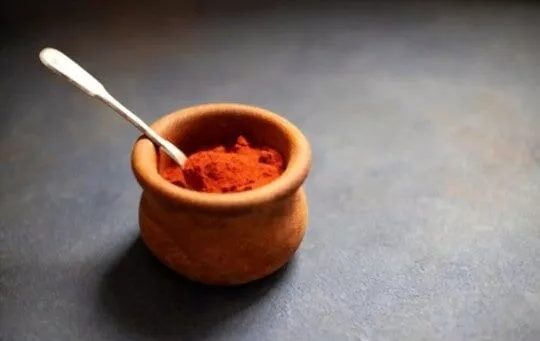
To recreate the distinct flavor of paprika without having to buy a new spice, opt for smoked paprika.
By slowly drying red peppers over an open flame, smoked paprika achieves a subtle smoky taste and aroma with hints of sweetness.
This near-identical substitute provides all of the benefits of traditional paprika while adding an unexpected twist to your meals.
2 – Ancho Chile Powder

Ancho chile powder is made from dried poblano peppers, resulting in a mild but flavorful profile.
This earthy seasoning boasts notes of raisin and cocoa along with a mildly spicy kick.
Its versatility makes it suitable for both savory and sweet recipes.
Its complexity adds depth to dishes while providing all of the benefits offered by regular paprika.
3 – Cayenne Pepper Powder

Cayenne pepper powder is one of the hottest spices available.
It’s made by grinding hot cayenne peppers into fine powder form and offers an intense kick that enhances any dish it’s added to.
While it may be too potent for some palates, reducing its amount until desired heat levels are reached helps mitigate its intensity while still delivering complex flavors similar to those provided by traditional paprika.
4 – Chili Powder

Chili powder takes on various forms depending on where it’s from and what ingredients are used (e.g., cumin, oregano).
Despite these variations, chili powder is generally made from ground dried chilies combined with other spices like onion or garlic powder and provides an intensely bold flavor profile that delivers countless health benefits when consumed in moderation.
5 – Chipotle Powder

Made from dried and smoked jalapeño peppers, this spicier alternative packs a punch without completely overpowering your meal’s flavor profile as cayenne pepper does.
Chipotle powder adds smokey undertones while introducing moderate heat levels into foods without being too overwhelming or overbearing; just enough to make each bite more interesting without masking other flavors present in your dish.
Its smokiness aligns well with the characteristics found in traditional paprika while delivering additional health benefits due to its higher concentration of vitamins A and C than regular chili powders.
6 – Red Pepper Flakes
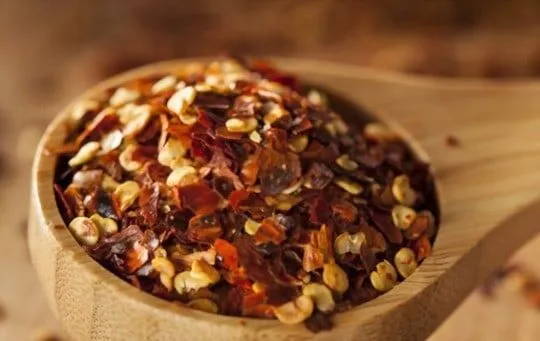
Red pepper flakes, also known as chili flakes or crushed red pepper, are made from dried and crushed red peppers.
They add a pleasant heat to dishes while providing the same intense color as paprika.
For a milder flavor, opt for sun-dried crushed peppers.
To ensure your dish doesn’t become overly spicy, start with small amounts of red pepper flakes and adjust the quantity according to the desired level of heat.
7 – Aleppo Pepper
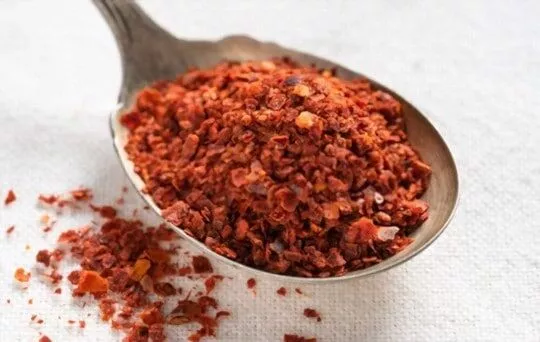
Aleppo pepper originates from Syria and is usually sold in flaked form.
It offers an earthy flavor with a mild heat that pairs well with a variety of dishes.
This versatile pepper can be used in marinades, soups, stews, sauces, salads, and more.
To maintain its savory aroma, add Aleppo pepper at the end of your cooking process; this helps retain its fragrance without losing its flavor or color.
8 – Harissa
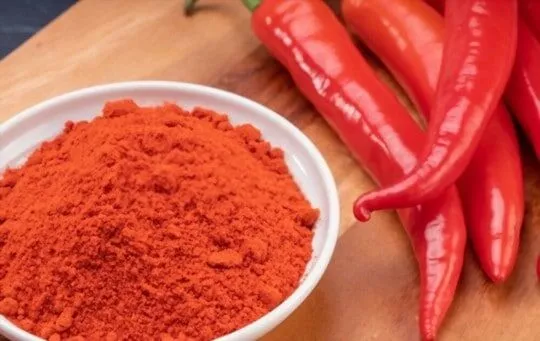
Harissa is a North African condiment typically made from chili peppers, garlic, olive oil, caraway seeds, coriander seeds, cumin seeds, lemon juice or vinegar, and salt.
Its unique combination of spices lends itself to numerous applications in the kitchen thanks to its smoky and sweet flavors.
Use this exotic blend as an alternative to paprika when preparing stewed meats like lamb or chicken for a distinctive flavor profile and enhanced aroma.
9 – Berbere

Berbere is a spice blend originating from Ethiopia, composed of chili peppers combined with several aromatic ingredients such as ginger root powder, cardamom seed powder, coriander seed powder, and garlic powder, among other spices and herbs like fenugreek leaves or fenugreek seeds.
These ingredients bring a hint of sweetness along with their respective earthiness and depth when cooked into food, enhancing its flavors and making them richer in aroma.
Suitable for vegetarian dishes like lentils or bean stews, berbere provides both a kick of spiciness and deep earthy undertones that are sure to hit the right notes!
10 – Gochugaru

Originating from Korea, gochugaru is made out of ground chilies that range from milder ones to very spicy, depending on customer preference.
Unlike other chili powders, gochugaru has a slightly fruity taste, which makes it interesting when used in Korean cuisine.
When it comes to replacing paprika, you could easily combine gochugaru with some sesame oil for an added nutty flavor.
However, because it already has some levels of spiciness, if you don’t want any extra heat, then it might not be the best option.
Furthermore, gochugaru will also render some vibrant reddish hues, making the platter pop up even more!
Frequently Asked Questions (FAQs)
What spice can I use instead of paprika?
There are several spices that can be used as substitutes for paprika, including smoked paprika, ancho chili powder, cayenne pepper powder, chili powder, chipotle powder, red pepper flakes, Aleppo pepper, harissa, berbere, and gochugaru.
Can I use cumin instead of paprika?
Cumin is not a good substitute for paprika, as it has a very different taste and aroma. While cumin is earthy and slightly bitter, paprika is sweet and mild. It is best to use one of the substitutes listed above if you do not have paprika on hand.
Can I make my own paprika?
Yes, you can make your own paprika by drying and grinding peppers from the Capsicum annuum family. However, it can be difficult to achieve the same consistency and flavor as store-bought paprika, so it may not be the best option.
Does paprika make a difference?
Yes, paprika can make a big difference in the flavor and appearance of a dish. It adds a sweet and mild flavor, as well as a vibrant red color, to soups, stews, meats, and vegetables. However, if you do not have paprika on hand, one of the substitutes listed above can be used instead.
Conclusion
In conclusion, while paprika is a popular spice used in many cuisines, there are several alternatives that can be used in its place.
From smoked paprika to gochugaru, each substitute has its own unique flavor profile and level of spiciness. It is important to choose the right substitute based on the recipe and personal taste preferences.
So, don’t worry if you run out of paprika – with these alternatives, you can still enjoy a flavorful and delicious meal.
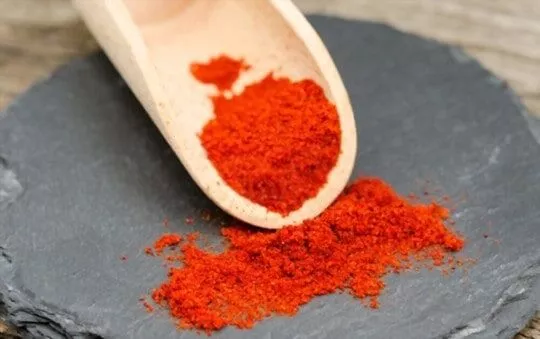
The 10 Best Substitutes for Paprika
Ingredients
- Smoked Paprika
- Ancho Chile Powder
- Cayenne Pepper Powder
- Chili Powder
- Chipotle Powder
- Red Pepper Flakes
- Aleppo Pepper
- Harissa
- Berbere
- Gochugaru
Instructions
- Pick your favorite substitute from the list above.
- Follow the cooking directions for your selected substitute with the proper ratio of ingredients.
Jenny has always been passionate about cooking, and she uses her platform to share her joy of food with others. Her recipes are easy to follow, and she loves giving tips and tricks to help others create their own unique culinary creations.

